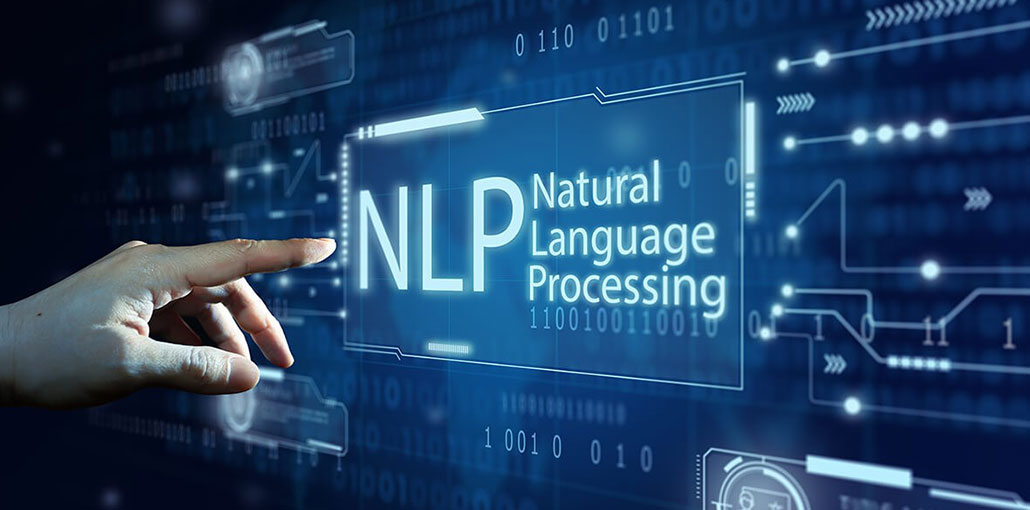Have you ever given any thought to how digital assistants like Siri can accurately understand our speech and return highly specific answers? Or have you ever tried to delve into the Alexa schematics just to empathize better with this virtual assistant? I bet not, and that is exactly why you need to get even more familiar with a term called NLP or Natural Language processing. NLP is one of the major AI technologies aimed at making machines capable enough to interpret speech and text-based human language.
And if you are still unsure about the utilities involved, NLP forms the backbone of several common tools like chatbots, grammar checkers, translation software modules, spam filters, and even scaled search engines. To be honest, NLP has its branches spread almost everywhere. But then, what’s interesting is how Natural Language Processing works and what kind of additional perks it brings to the AI and ML table.
What is Natural Language Processing: Technicalities Explained?
As a branch of Artificial Intelligence, NLP is all about making machines responsive to human language. Coming to the tech aspect of it, NLP, quite appropriately, uses computer science, linguistics, algorithms, and overall language structure to make the machines intelligent. The proactive and intuitive machines, whenever built, can extract, analyze, and understand the true meaning and context from speech and even text.

Coming to the more technical aspects of NLP and the requisite implementations, the elementary process is all about feeding labeled data to the NLP algorithms in play, which then determines the intuitiveness of the machine. Therefore, it wouldn’t be wrong to segregate NLP into two vital phases, including Data Preprocessing and Algorithm Development.
Also read: Best 12 Open Source Tools for Natural Language Processing
How does Natural Language Processing Work?
NLP, courtesy of the two phases we just touched upon, takes written or spoken inputs from the real world and processes them in a way that machines can understand. Just like we, the humans, use ears and eyes to process information, machines have programs to do the same, with algorithms being the important connectors in that play.
The data, once fed into the machines, especially for the algorithms to make sense, is then converted to the binary setup that a computer actually understands. Also, the data that is to be fed needs to go through a rather rigorous preprocessing approach, which involves the following techniques:
- Stemming
- Text Vectorization
- Lemmatization
- Tokenization
- Dependency Parsing
- Stop-word Analysis and Removal
- PoS Tagging
- NER
However, each one of the mentioned data preprocessing techniques can be generalized as Semantic and Syntactic analysis. While we shall not delve deeper into these classifications for now, here is a quick rundown to help you follow the discussion better.
- Semantic Analysis- Involves understanding the word interactions, the meaning of words, and sentence structuring
- Syntactic Analysis- Involves syntax analysis and understanding dependencies between elements
Once the data is extracted and cleaned using the above-mentioned strategies, relevant algorithms need to be processed, depending on the machine and type of expertise you want to impart. While NLP algorithms deserve a discussion of their own, here is a broader classification for your understanding:
- ML-based System for Developing Algorithms
- Rules-based developing system
Why is NLP important and needs such Detailed Discussions?
Humans, in an effort to automate basic and even complex tasks, need to rely extensively on machines. However, interacting with machines isn’t a straightforward process and requires a proper technological pathway to cut out hiccups and ambiguities. This is where NLP comes forth as an impactful AI-specific field that allows companies to train any voice assistant, chatbot, translation software module, and other relevant entities to understand human language better.
Still confused, here are some of the reasons that make NLP virtually indispensable:
- To develop industry-relevant resources.
- Automate specific processes in real-time
- Manage large-scale data analysis, especially if you are an online retail store, travel agent, news reporting website, or anything else
- To improve the accuracy of complex documentation.
- To understand the context behind the speech or textual data sets.
, and more
Natural Language Processing Use Cases: Real-Time Implementations for a Better Understanding
Now that we have covered quite a few technical aspects relevant to NLP, here are some use cases that have come up the ranks and are slowly evolving into futuristic trends:
Social Media Analytics
Big brands dealing in premium products and services deploy NLP-powered analytics tools for social media, especially for understanding customer patterns, behavior, and preferences. Plus, highly intelligent tools can even filter out biased and fake reviews to handle perception better.
TTS Apps
Language translation tools, video gaming giants, and even Call Centers deploy relevant and intelligent AI text to speech tools to create rich and highly interactive experiences for the users. However, the quality of the analysis depends on which NLP expert the concerned firm has eventually connected with.
Search Queries
NLP-powered search engines and eCommerce stores are getting all the attention now as they can help users return more relevant results upon analyzing the search terms better.
Chatbots and Personal VAs
This point brings us back to the discussions concerning Alexa and Siri. And with the digital space brimming with futuristic voice assistants, NLP implementation has made it possible for companies to custom-train these intelligent entities by connecting to other resources, gaining perspective from previous interactions, and even recalling relevant search queries.
But intelligent chatbots have most of our attention moving into 2022, as they are behind the growth of proactive customer support systems and can be termed as the future of conversational AI. NLP-powered chatbots are capable of recognizing user intent from text and speech, which then allows companies to return the most relevant results. And if you are into specifics, do note that intuitive chatbots can easily solve close to 80% of existing customer tickets if the company’s NLP game is on point.
Also read: What is Explainable AI and How to Build Trust in AI Models
Language Translation
Machine Language translation has always been NLP’s most valued use case. While the concepts and techniques have evolved over time, the inherent and elementary aspect still remains the same. However, the data preprocessing and algorithm generation techniques depend on the nature of translation and the amount of accuracy you seek.
Also, when extrapolated, this use case even takes Natural Language Generation or NLG in its purview. And in 2022, we can expect more powerful computers to evolve that can quickly and accurately generate text and speech in natural language.
Insight Extraction
Arguably the most underrated NLP use case, information extraction is extremely useful in healthcare, where practitioners and analysts need to extract records depending on some highly relevant and exclusive information. The software modules with built-in NLP intelligence can reduce downtime and speed up the extraction
Wrap-Up
But wait, is it everything about NLP? Not even by a long shot. Natural Language Processing (NLP) is a far more exhaustive arena that has been getting more powerful and inclusive each day, with the influx of new and relevant technologies.
And while there is no dearth of resources, organizations planning to make their offering even more intelligent with relevant NLP techniques and inputs must always consider connecting with an NLP expert that puts requisite weightage on data collection, data cleaning, data labeling, algorithm development, classifier modeling, and other strategies and feature implementations.
Interested in learning about NLP in-depth? Keep checking this space for the trendiest of info.










Leave a comment